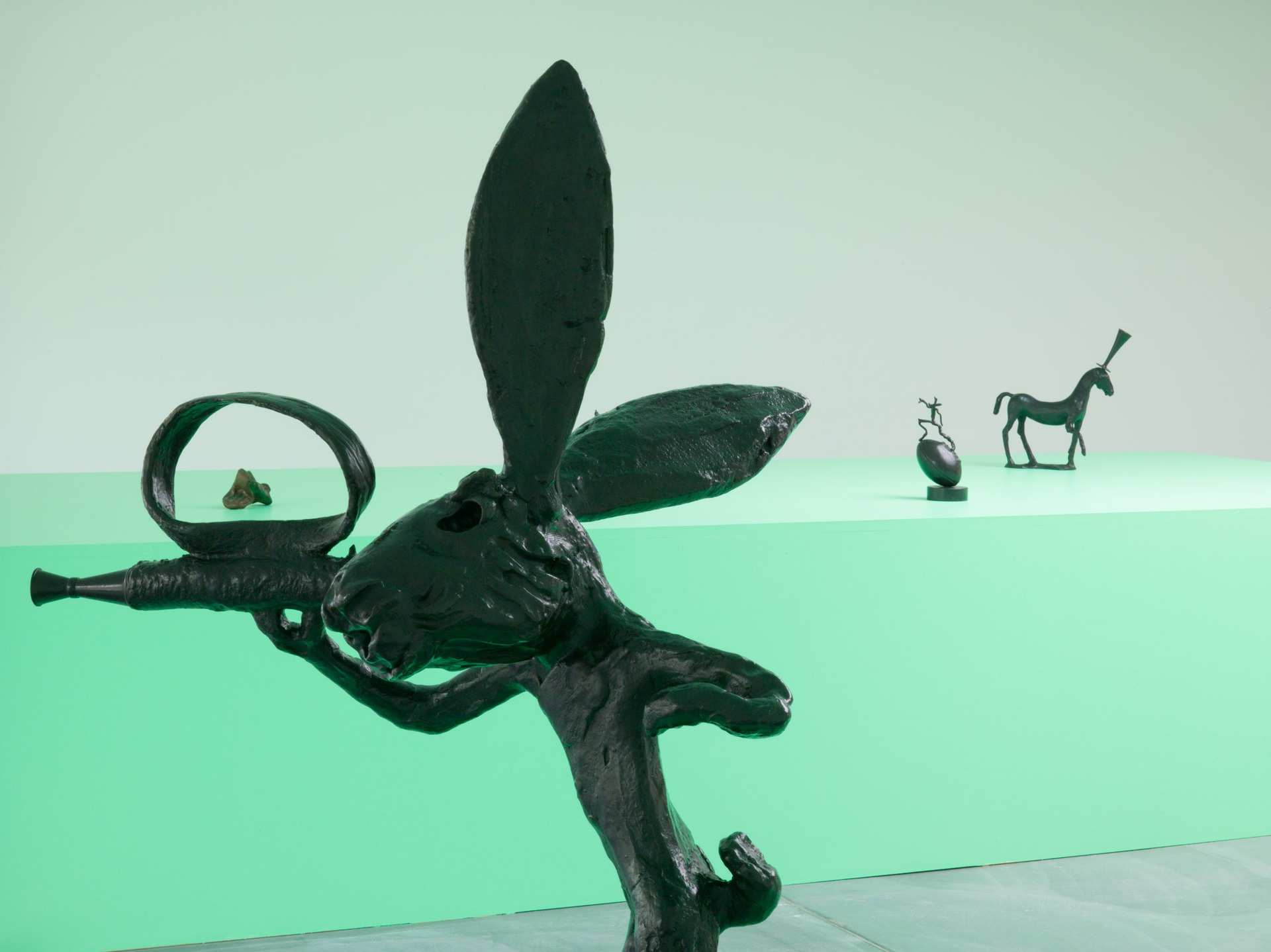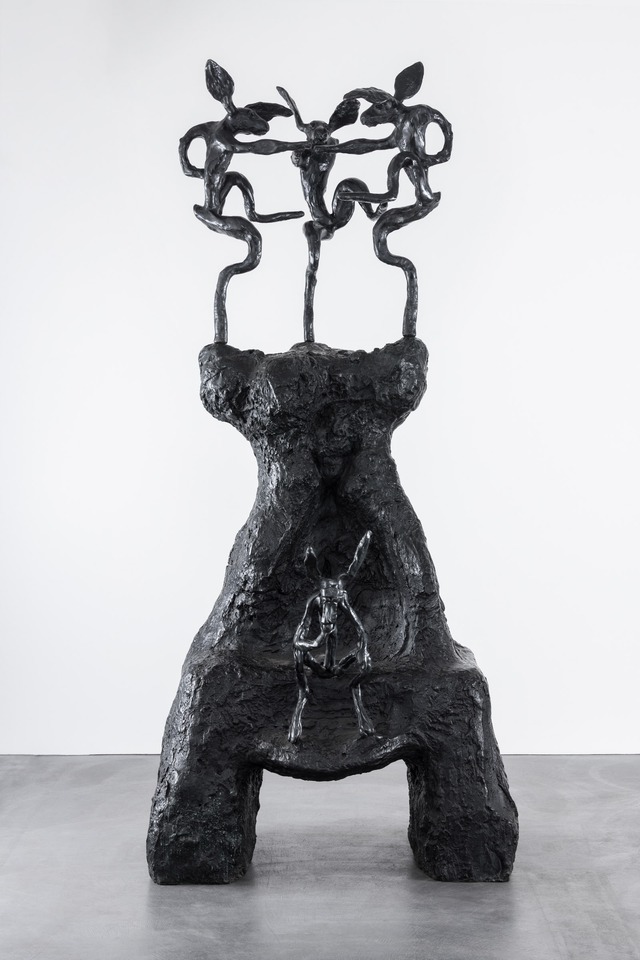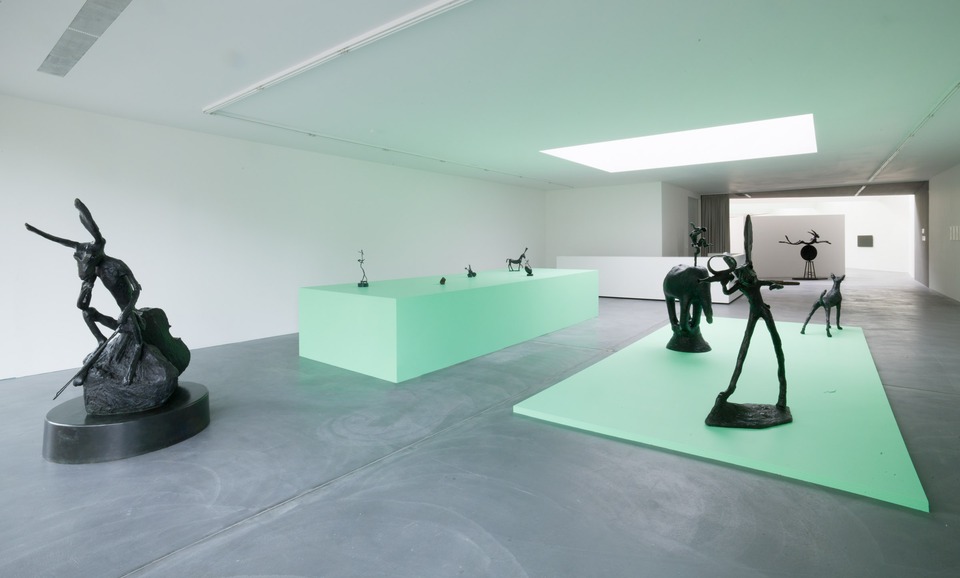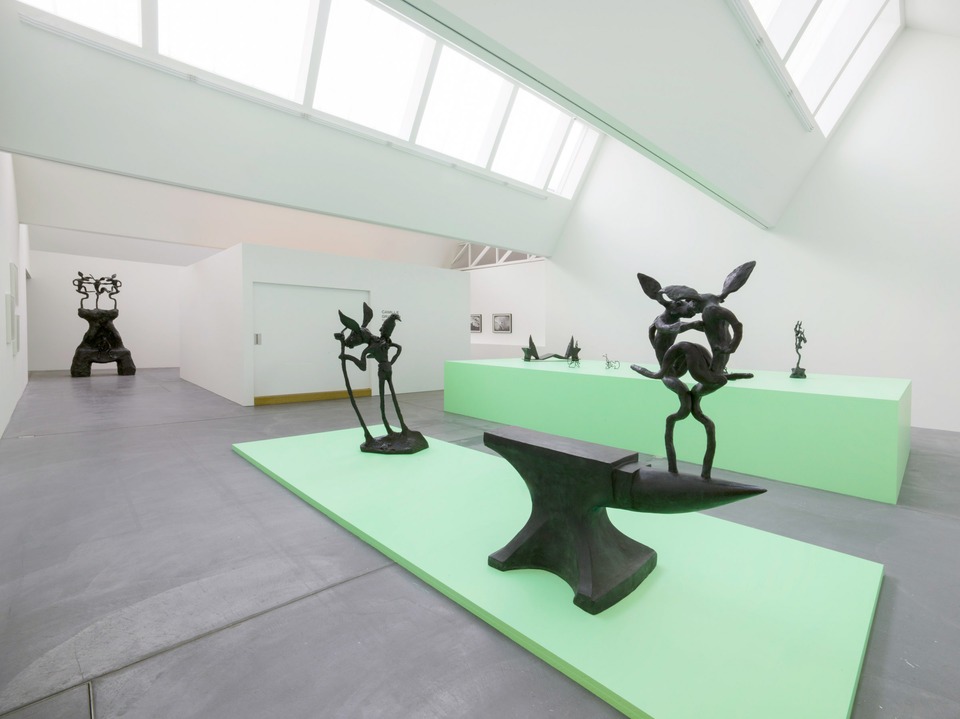Barry Flanagan

von Bartha, Basel
von Bartha is pleased to present a retrospective of work by Welsh artist Barry Flanagan across the Basel gallery’s north and south spaces, 21 May – 31 July 2021. The exhibition will showcase a variety of Flanagan’s practice from different periods of his career, revealing the breadth of the artist’s work and the continual reinvention of his practice and approach to art making.
Barry Flanagan (1941–2009) was one of Britain’s pre-eminent artists. The exhibition will bring together a diverse range of works by Flanagan from throughout his career, from the 1960s to the late noughties across the media of film, drawing, photography and sculpture, amongst others. Alongside the artist’s iconic hare sculptures, the exhibition will also showcase early sculptures which demonstrate Flanagan‘s radical experimentation with materials such as cloth, stone, sand and clay. Works from different periods of Flanagan’s career will sit in dialogue with one another, revealing the core themes which lie at the heart of the artist’s oeuvre such as Shamanism, Pataphysics and theatricality.
Key works in the exhibition include *a hole in the sea *(1969) and *bollards project *(1970), film works which will be screened on TV monitors, as they were originally intended to be shown. For *a hole in the sea, *Flanagan buried a hollow cylinder in the sand during a rising tide and filmed the gradual disappearance of the ‘hole’ as the water eventually covered it. The work was filmed on a beach in the Netherlands for Gerry Schum’s TV exhibition ‘Land Art’ which featured recordings of artistic interventions in the landscape by eight artists. *Bollards project follows the artist’s protest against Camden council’s plans to erect a large number of permanent bollards on street corners. *With the help of a friend, Flanagan hired a van and with a concrete mixer and a sewing machine drove around creating his own versions of bollards using cloth bags filled with cement.
The exhibition will also feature the works *Grass 1 – 3 *(1967) and *Figure in the trees *(1993). Grass 1 – 3 is a series of photographic prints by Flanagan which capture indentations created by picnic-goers flattening the grass on Hampstead Heath. Figure in the trees is a bronze sculpture of a long-eared hare which carries a rook on his shoulder. The sculpture depicts the hare wandering contemplatively with an inkpot and pen balanced on his staff, as if caught in the act of creation.
Flanagan was a leading figure in a generation of influential sculptors emerging from St. Martins School of Art in the 1960s, where his peers included artists such as Richard Long and Gilbert & George. From early on, he used building materials such as sand, rope and string to make sculpture. These experimental works led him to be characterised as a Conceptual artist, although Flanagan did not particularly like this designation, and instead referred to himself as ‘a part-time Conceptual artist.’ Flanagan quickly received international acclaim for his inventive approach to materials, which aligned him with the emergent art movements of Arte Povera, Land Art and Process Art. Later in his career, Flanagan began to explore more traditional materials and methods, working with stone and bronze, producing his dynamic and often monumental hare sculptures. Although Flanagan’s name is often associated with his bronzes of hares, many animals feature in the artist’s oeuvre, such as the cougar, elephant and horse to the domesticity of pets, butterflies, insects, amphibians and birds. All these creatures were used by Flanagan as vehicles to explore material qualities and psychological states as well as to reflect upon the human condition.
Jo Melvin, Director of the Estate of Barry Flanagan commented: “This exhibition will bring together a selection of Flanagan’s iconic bronze sculptures alongside earlier works, offering insight into the interconnectedness of aspects of his practice that are often seen as distinct. The way the sculpture relates to us – bodily, viscerally, smell, touch… sensory and primordial perceptions – from sand, cloth, stone to bronze – all material has tangible, tactile qualities – autonomous as sculptures but also suggestive of bodies and skin, skin and its folds, creases…”
Stefan von Bartha, Director, commented: “I liked the idea of Flanagan’s work returning to the gallery within the context of how our programme has evolved. Today, Flanagan is being seen in an entirely different light. He has such a clear and well-known visual identity that it is important to surprise visitors to the exhibition, curators, and collectors, by showing more from Flanagan’s body of work and the different stages of his oeuvre.”
Alongside the exhibition of Flanagan’s work, a series of 20 drawings by Swiss artist Camille Graeser will be shown in the Basel gallery’s Cube space. The presentation will feature sketches for textile design, which were made by the artist in the 1930s and 40s, prior to his career as a classical painter which was established following the end of WWII. Since 1950, Graeser, together with Bill, Loewenberg and Lohse, has been considered one of the leading representatives of Concrete Art in Switzerland.
Von Bartha follows the recommendations of the Federal Office of Public Health. Information on our online events and visiting our spaces will be communicated on our website and social media channels.

Barry Flanagan
Monument, 1996
Bronze
296.5 x 132.1 x 109.9 cm
Cast number 3 from an edition of 6 plus 2 artist’s casts

Barry Flanagan
Exhibition view
von Bartha, Basel, 2021

Barry Flanagan
Exhibition view
von Bartha, Basel, 2021

Barry Flanagan
Exhibition view
von Bartha, Basel, 2021